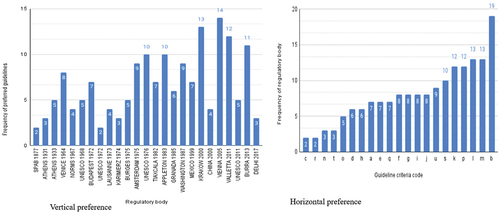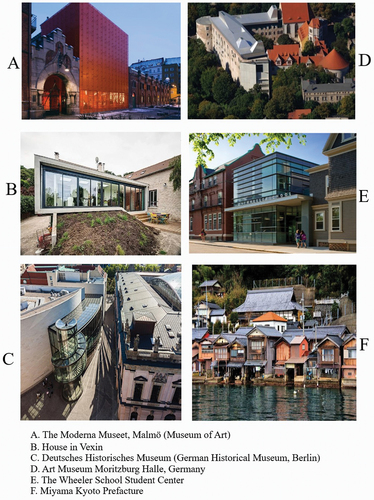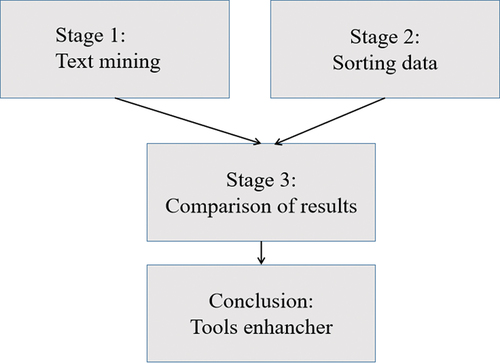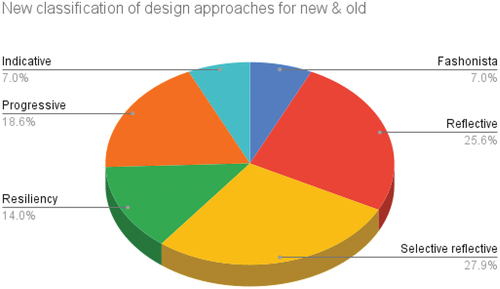Figures & data
Table 1. Contextual-based design approaches direction (authors, 2022).
Table 2. Regulatory bodies preference (authors, 2023).
Table 3. Design approaches new classification (authors, 2023).
Figure 3. Regulatory bodies’ guidelines criteria preferential treatment (authors, 2023). The 21 guideline criteria are coded as (a-u): a.New work should avoid forgery approaches. b.Protection of monuments’ character/surroundings, historic values and not demolish. c.Demolition of slums surrounding monument for greenery and situation removal of buildings. d.Permit use of modern materials, advanced techniques and sciences. e.Styles of all periods should be represented/respected. f.Rigorous scrutiny of contemporary proposals/new materials by specialists. g.Permit change of function/modifications as urban evolution/continuity. h.Avoid distortion or conjecture but maintain consistency. i.New must be distinct and bear contemporary stamp (mark of our age). j.Valorization of cultural heritage as tools for progress. k.New role/adaption of the “historic groups” and authenticity/integrity should be regarded. l.Contemporary architecture as part of town-planning scheme for future development demands administrative resources. m.Avoid new uses that rip residents’ liveliness and historic condition. n.Contemporary architecture/change must add or be of high quality. o.Contemporary interventions should consider social costs. p.New should be harmonious/contextualize with its surroundings/whole town. q.Continue to use traditional crafts and methods (contemporary vernacular architecture) r.Homogeneous groups of historic and architectural areas should continue unchanged. s.Safeguarding the natural or man-made environment as umbrella concept for heritage care (activities and interventions). t.Urban context analysis should precede new construction. u.Duplicate Venice Charter principles

Table 4. Ranking of key guidelines criteria (authors, 2023).



